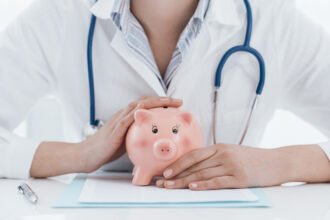The demand for emergency room services in the United States has increased 50% since 1994, according to a study published by the Healthcare Financial Management Association. America’s ERs frequently experience overcrowding and radical upward swings in intake. In addition to the increase in services, the industry has also experienced a 13% decrease in the number of emergency departments active in the U.S. This imbalance in staffing and services related to the number of patients needing said services has led to many discussions on ways to properly meet the demand with the given supply of medical personnel and facilities. One of these discussions has led to an upward tick in the number of emergency departments using management theory and data analytics tools to determine when to expect these “rushes” and prepare accordingly.
Framing the Problem
The term “understaffing” is a bit of a misnomer, because there are a lot more factors than just having an influx of patients that are causing the emergency departments to overcrowd. Using data analytics, the emergency department industry has been able to determine additional factors. Some of the more prominent factors are:
- Patients reporting to emergency rooms who do not require emergency care
- Staff not performing to standards
- Improper staff utilization
- Misuse of funds
In most cases, the emergency department of a given hospital system is a financial loss leader. It’s an expensive setting which doesn’t regularly result in extended lengths of stay for patients. A study by the CDC (Centers for Disease Control and Prevention) determined that only 8.7% of emergency department visits result in admissions to other areas of he hospital system. Given the reality of the emergency departments not being revenue builders, monetary data can be used to save the department money, and ultimately provide proper staff and facilities for patients in need.
Poor Staffing Allocation Costs
Historically, emergency departments have combated “rushes” by bringing in on-call staff or reaching out to employees who were not scheduled to work. Often, the cavalry wouldn’t arrive in time and the emergency department wound up with too few workers to admit everyone during the rush, and far too many after the rush was over, resulting in financial losses on both ends. Using analytics to prepare for these rushes ahead of time is a great start to cutting costs.
Data to the Rescue
Using data is the best way to achieve this. As an example, Bergen New Bridge Medical Center in New Jersey was experiencing losses in the emergency department and implemented a data analytics system which determined when to have more staff and when to reduce the numbers of nurses on the floor. Analytics also determined that rushes tend to happen in the middle of the day so a mid shift was added and some late shifts were cut. Hospitals aren’t the only venues in which data is being used cut costs. Any business with a supply and demand can benefit from the knowledge gained, and even some high schools are beginning to teach (and use) data analytics tools in the classroom. In addition to in-house data, hospital systems are working together to share data as well, with the sense that if all emergency departments are experiencing losses, it’s a win-win for patients if the hospitals share their data and successful changes that resulted from the data. Analytics will ultimately save hospitals money and save patients’ lives.










